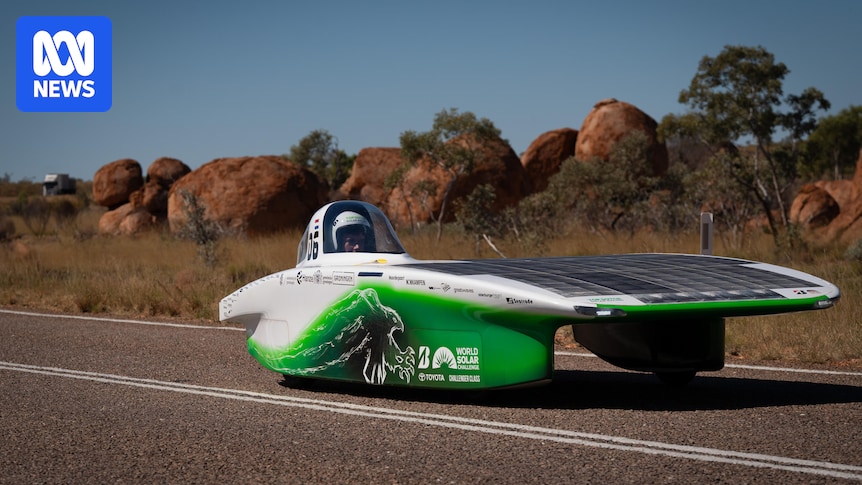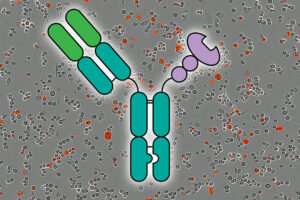
As the sun rises over the remote Northern Territory outback, a rusty old windmill stands sentinel over the vast bushland. This rural landscape, reminiscent of an old bush poem, is juxtaposed against a scene straight out of science fiction. The World Solar Challenge, a prestigious international event, has brought futuristic solar-powered vehicles to the Australian outback, racing past iconic sites like the Devils Marbles as they journey southward.
Six innovative vehicles, resembling alien spacecraft, are parked outside the Dunmarra Wayside Inn. Their solar cells, spread across the bonnets, eagerly soak up the morning sun. Dozens of young engineers, speaking in a cacophony of Dutch, Japanese, French, and Swedish, buzz with nervous energy as they prepare for the day’s race. This is the World Solar Challenge, a five-day event where university teams from around the globe race 3,000 kilometers from Darwin to Adelaide using solar-powered electric vehicles they have meticulously designed.
Harnessing Solar Power in the Outback
The challenge kicked off in Darwin on a Sunday morning, with teams covering approximately 630 kilometers before setting up camp at 5 PM, adhering to competition rules. The event is a testament to international collaboration and innovation, welcoming scientific minds to Australia’s Top End. The vehicles, powered entirely by solar energy, showcase the potential of sustainable technology.
Ruari Milligan, team leader of the Western Sydney University (WSU) team, emphasizes the importance of morning solar charges.
“These cars run on the sun and their batteries are pretty small, especially under this year’s regulations. Getting these morning charges is essential,”
he explains. The real test begins once the cars hit the Stuart Highway, navigating the perils of the Australian outback.
Challenges on the Stuart Highway
For international competitors, the Australian outback presents a stark contrast to their home environments. Aaron Sharma from WSU describes the unique challenges:
“We’re sharing the roads with 63-metre-long road trains while navigating cattle grids, roadkill, emus jumping out [in] the road, fires, heavy winds. The Australian highway really does teach you some lessons.”
The reigning champions from Belgium have prepared extensively, subjecting their drivers to heat endurance training to acclimate to the harsh conditions.
Yarne Billen, a pilot for the Innoptus Solar Team, shares their preparation strategy:
“We’ve been training in climate chambers at higher humidity and temperatures, just to see how our bodies react and how our reaction times change. Here in the Northern Territory, what you call ‘winter’ is summer in Belgium.”
Yet, even the best preparation cannot fully mitigate the challenges posed by the rugged terrain.
Innovation Takes Center Stage
As the 34 teams departed Darwin, local crowds gathered to witness the spectacle. The World Solar Challenge not only captivates with its novelty but also serves as a testing ground for future automobile technology. Danny Kennedy from the Global Solar Council notes the real-world implications:
“Things that are tested in this competition, by university teams driving down the Stuart Highway, are actually ending up in the real world.”
Event ambassador Chris Selwood highlights the sustainable innovations, such as tyres made from 65% recycled material.
Deakin University Solar Team’s Tamanna Sharma underscores the importance of local sourcing:
“We’ve made our car from scratch using supplies from local manufacturers. We managed to reduce our carbon footprint by 55% just by doing that.”
The emphasis on sustainability does not detract from the excitement, as teams like Italy’s Onda Solare incorporate AI companions and stylish designs reminiscent of Ferrari.
Global Collaboration and Camaraderie
The World Solar Challenge fosters a unique sense of camaraderie among participants. Despite the competitive atmosphere, there is a shared enthusiasm for innovation and sustainability. Juliette Evers from Top Dutch Solar Racing reflects on the spirit of the event:
“Our best position so far has been fourth, but we understand why we’ve gotten fourth and we’ve changed the game.”
The competition is fierce, especially against the Belgian champions, yet the underlying camaraderie is palpable.
Wout Rubbrecht, manager of the Innoptus team, highlights the shared experiences:
“It’s very exciting to see all the other teams with their own innovations. We always try and catch up by playing football or having dinner together.”
This sense of community extends beyond the race, with participants expressing aspirations for future collaborations.
Looking to the Future
The World Solar Challenge is more than just a race; it is a celebration of human ingenuity and the potential for sustainable technology. As the teams continue their journey to Adelaide, they carry with them not only the hopes of victory but also the promise of a greener future. The innovations tested in the harsh Australian outback may soon find their way into mainstream automotive technology, paving the way for a more sustainable planet.
As the event progresses, the world watches with anticipation, eager to see which innovations will emerge victorious and how they will shape the future of transportation. The World Solar Challenge stands as a beacon of hope, demonstrating the power of collaboration and the limitless potential of human creativity.






